EcoE bike Blog
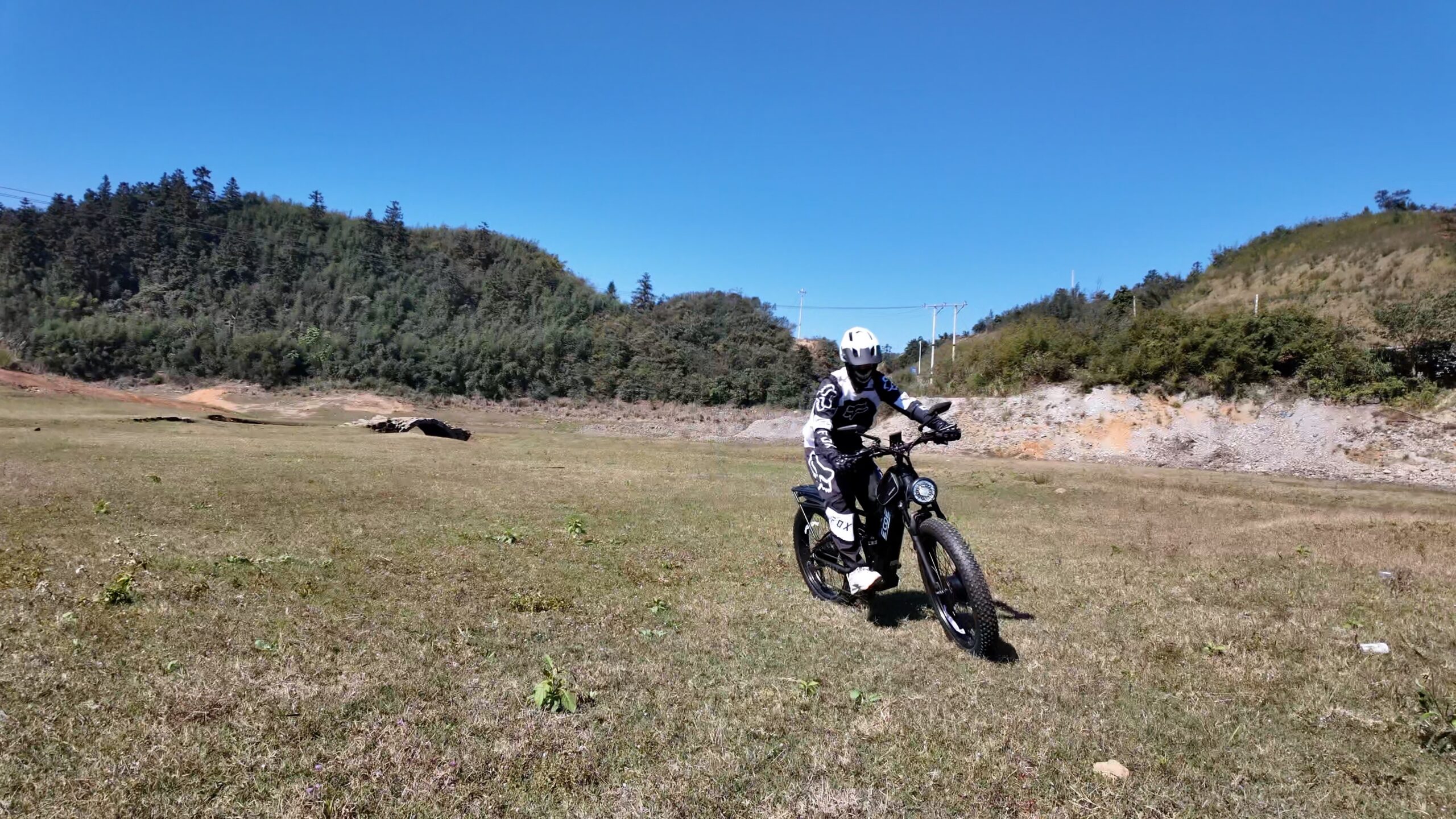
The development history of electric bicycle braking components from the early 21st century to the mid – 2010s
The EcoE 5000W electric bike Powerful Motor: EcoE is equipped with a 60V 5000W high-speed brushless motor. Due to different loads and road conditions, the electric bike drive system provides adjustable assistance, allowing you to stay healthy, relax, and exercise.Accessories: This electric bike accessory set includes a rearview mirror, water bottle holder and bottle, a sturdy phone mount, and a waterproof phone pouch. The reinforced cargo rack allows you to easily carry extra items needed for your ride. Additionally, if you need more accessories, you can purchase a detachable storage rack, passenger safety seat, trailer, and more.60V 32AH Battery: The bike is equipped with a high-capacity, removable 32AH battery, providing longer range per charge and over 1000 charge cycles. With pedal assist, the fat tire e-bike can travel 35-80 miles, depending on riding mode, load, and terrain. You can also purchase a spare battery for extended trips.Comfort and Versatility: This fat tire electric bike comes with dual front suspension and rear shocks to reduce impact and strain during rides. Its 26-inch wheels, 4-inch tires, and SHIM 7-speed system offer excellent grip across diverse terrains. Front and rear disc brakes ensure safe, responsive stopping, whether on mountain trails or city streets. – The following is the relevant table: Time Development of braking components Characteristics Early 21st century – mid – 2010s Emergence of electronic braking technology, such as E – ABS Good braking effect at high speed, can recharge the battery Early 21st century – mid – 2010s Popularization of disc brakes High – efficiency braking, good heat dissipation, low noise, etc., with gradually decreasing cost Early 21st century – mid – 2010s Drum brakes are still in use Simple structure, stable braking at low speed, less affected by the environment Early 21st century – mid – 2010s Development and gradual decline of the follow […]
Read more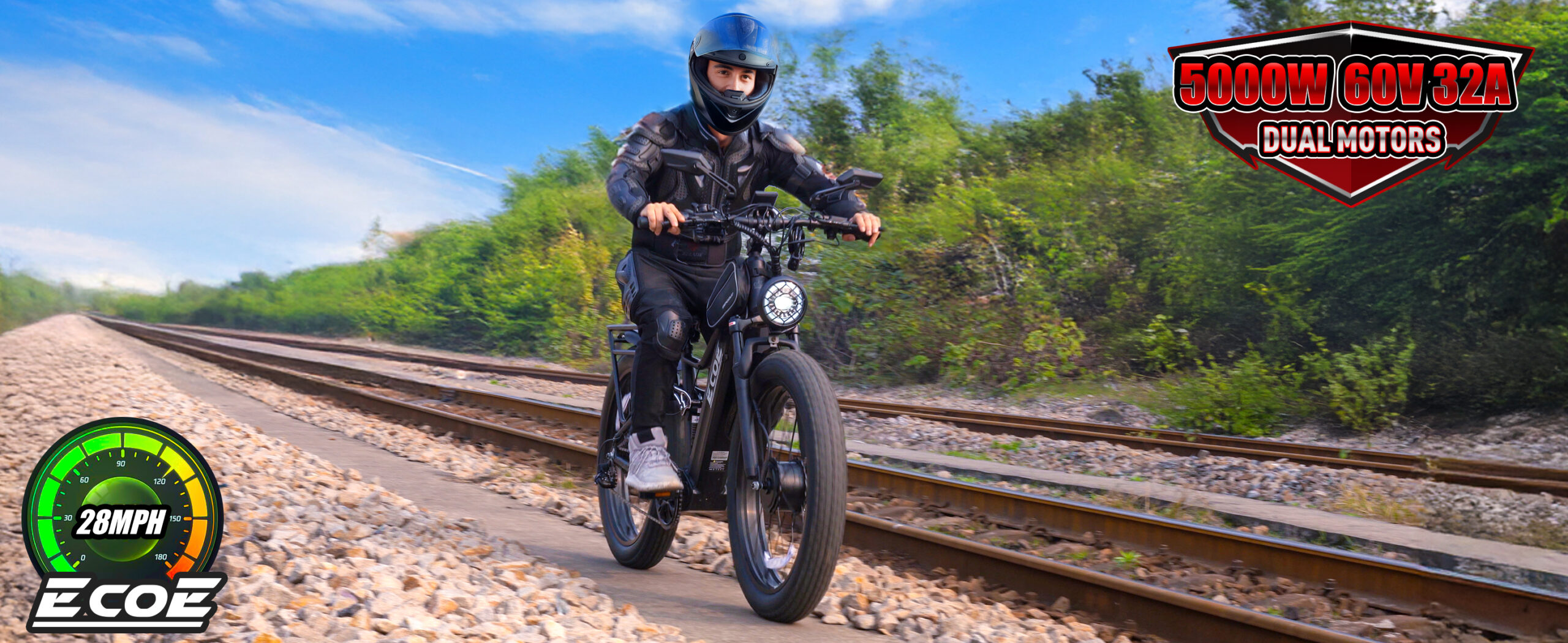
The development history of electric bicycle braking components from the early days of electric bicycles to the end of the 20th century
The EcoE 5000W electric bike Powerful Motor: EcoE is equipped with a 60V 5000W high-speed brushless motor. Due to different loads and road conditions, the electric bike drive system provides adjustable assistance, allowing you to stay healthy, relax, and exercise.Accessories: This electric bike accessory set includes a rearview mirror, water bottle holder and bottle, a sturdy phone mount, and a waterproof phone pouch. The reinforced cargo rack allows you to easily carry extra items needed for your ride. Additionally, if you need more accessories, you can purchase a detachable storage rack, passenger safety seat, trailer, and more.60V 32AH Battery: The bike is equipped with a high-capacity, removable 32AH battery, providing longer range per charge and over 1000 charge cycles. With pedal assist, the fat tire e-bike can travel 35-80 miles, depending on riding mode, load, and terrain. You can also purchase a spare battery for extended trips.Comfort and Versatility: This fat tire electric bike comes with dual front suspension and rear shocks to reduce impact and strain during rides. Its 26-inch wheels, 4-inch tires, and SHIM 7-speed system offer excellent grip across diverse terrains. Front and rear disc brakes ensure safe, responsive stopping, whether on mountain trails or city streets. – The following is a summary table: Time Type of braking component Characteristics Late 19th century – 1980s Caliper – type brake Basically adopted the braking system of bicycles. It has a simple structure, low cost, limited braking effect, and is prone to making a whistling sound when braking. 1980s – 1990s Caliper – type brake, drum brake The caliper – type brake was still widely used, and the drum brake began to be applied. The braking effect of the drum brake is better than that of the caliper – type brake. It is cheap, the brake pad is wide, the friction torque is […]
Read more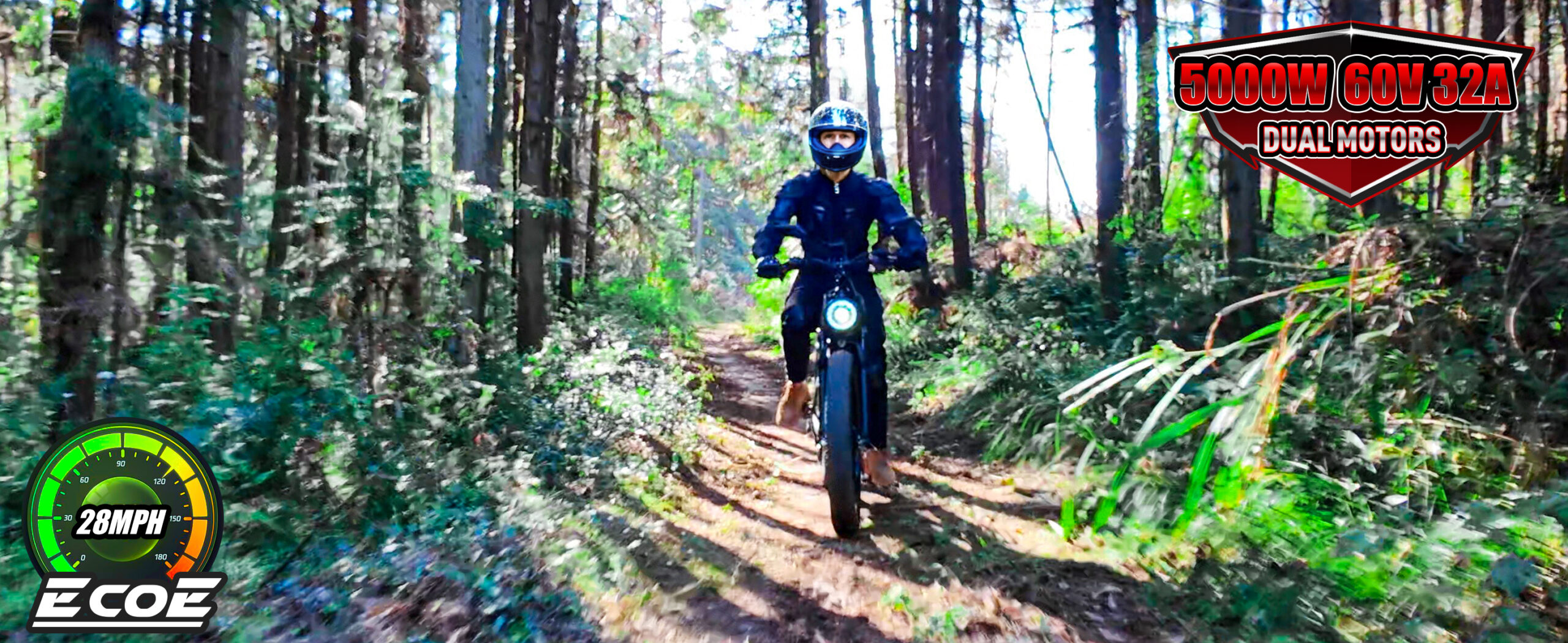
Electric Dirt Bike Accessories for Adults: Must-Have Gear for Off-Road Safety
Riding off-road on an electric dirt bike is pure adrenaline—but without the right gear, it can quickly turn dangerous. In this guide, we’ll walk you through the must-have accessories for adult riders to stay safe, ride smart, and enjoy every jump, climb, and muddy skid with confidence. Why Safety Gear Matters More with Electric Dirt Bikes When we first got into electric dirt biking, it was easy to get caught up in the horsepower, fat tires, and flashy LCD dashboards. What we didn’t think about was how fast these things really go—and how unforgiving trails can be when you’re doing 30 mph over loose gravel. The truth is, electric dirt bikes like the Ecoe 5000W Dual Motor can hit serious speeds. And while the thrill is unbeatable, it also means that protective gear isn’t optional—it’s essential. The Must-Have Gear Checklist for Adult Riders 1. DOT-Approved Full-Face Helmet If you invest in one thing, make it this. A full-face helmet with a solid chin guard and DOT certification is your best defense against head injuries. Look for models with ventilation, adjustable visors, and moisture-wicking liners. We personally recommend Bell, Fox Racing, or 6D Helmets—trusted brands in the dirt world. 2. Armored Riding Jacket Forget fashion—go for function. A good riding jacket comes with built-in armor at the elbows, shoulders, and spine. Look for CE-rated pads and abrasion-resistant materials like Cordura or Kevlar. Bonus points if it’s waterproof. You never know what kind of weather or terrain you’ll hit on longer rides. 3. Gloves with Knuckle Protection Your hands are the first to go flying in a crash. Padded gloves with reinforced knuckles and palm sliders reduce both impact and friction damage. We’ve found that dirt bike-specific gloves offer way better grip and breathability than generic work gloves. 4. Knee and Elbow […]
Read more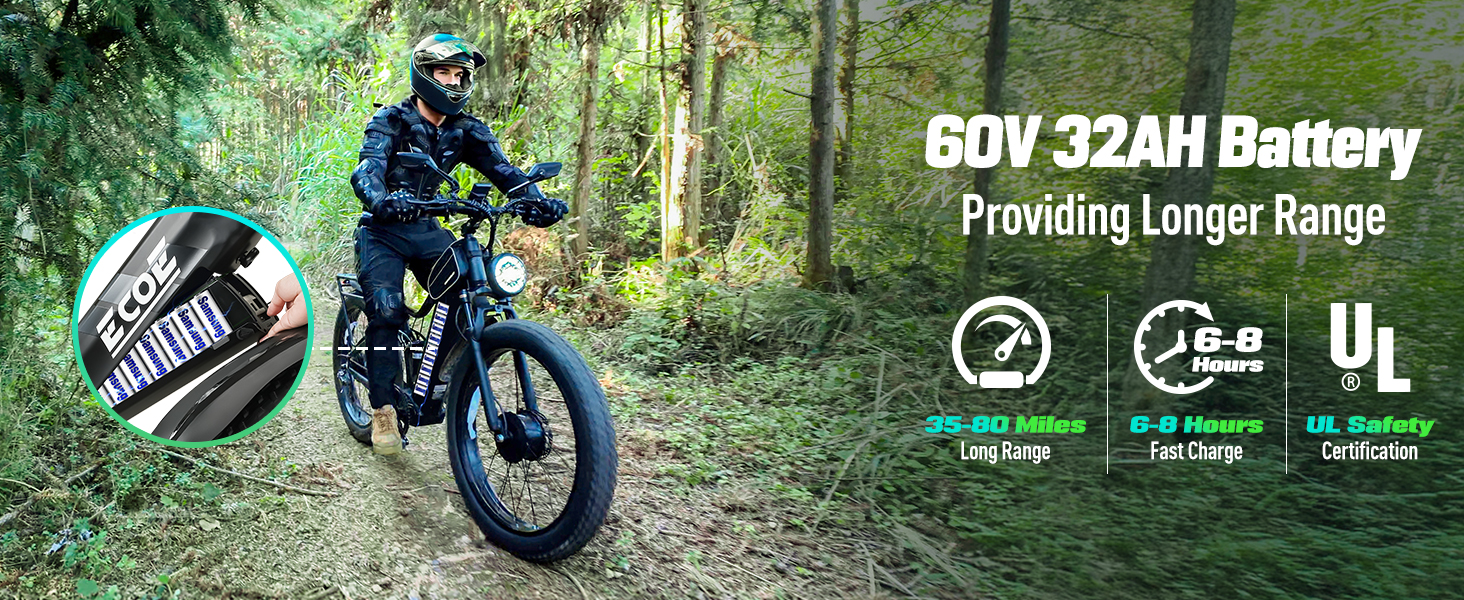
Where to Buy Electric Dirt Bikes for Adults: Trusted Retailers & Online Stores
Thinking about buying an electric dirt bike but don’t know where to start? Whether you’re looking for trail-ready power or a city-friendly dual-motor beast, this guide helps you find trusted retailers and online stores that deliver quality, reliability, and solid after-sales support. A couple of years ago, our options were limited—maybe one dusty dealership in the next town or a few sketchy websites that made us nervous to click “checkout.” Now, things have changed. Electric dirt bikes are booming, and so is the number of reliable ways to buy them. We’ve bought online. We’ve tested in person. And we’ve read a lot of Reddit threads, watched reviews, and asked the community. Here’s what we’ve learned. Top Places to Buy Electric Dirt Bikes for Adults 1. Specialty E-Bike Dealers (In-Person Showrooms) If you want to test-ride before buying, local electric bike showrooms or powersports dealerships are a great place to start. Brands like Sur-Ron, Talaria, and Cake often have physical dealers across the U.S. Tip: Call ahead—many showrooms only stock a few models at a time. 2. Direct-to-Consumer Brand Websites Brands like Ecoe, Super73, Segway, and Onyx sell their electric dirt bikes directly through their websites. This is a great way to skip the middleman and access exclusive deals or seasonal promos. 🛒 Why we like this: For example, the Ecoe 5000W Dual Motor Electric Bike is available directly from Ecoe’s site. At $1,499, it’s a strong deal—especially considering its fat tires, dual motors, and long-range battery. Buying from Ecoe gives you access to dedicated customer support and real-time order tracking. 3. Reputable Online Marketplaces (Amazon, Best Buy, REI) Yes, you can buy an electric dirt bike on Amazon—but you have to be selective. Stick with well-known sellers or Amazon Verified Brands. Some models are sold and fulfilled directly by the […]
Read more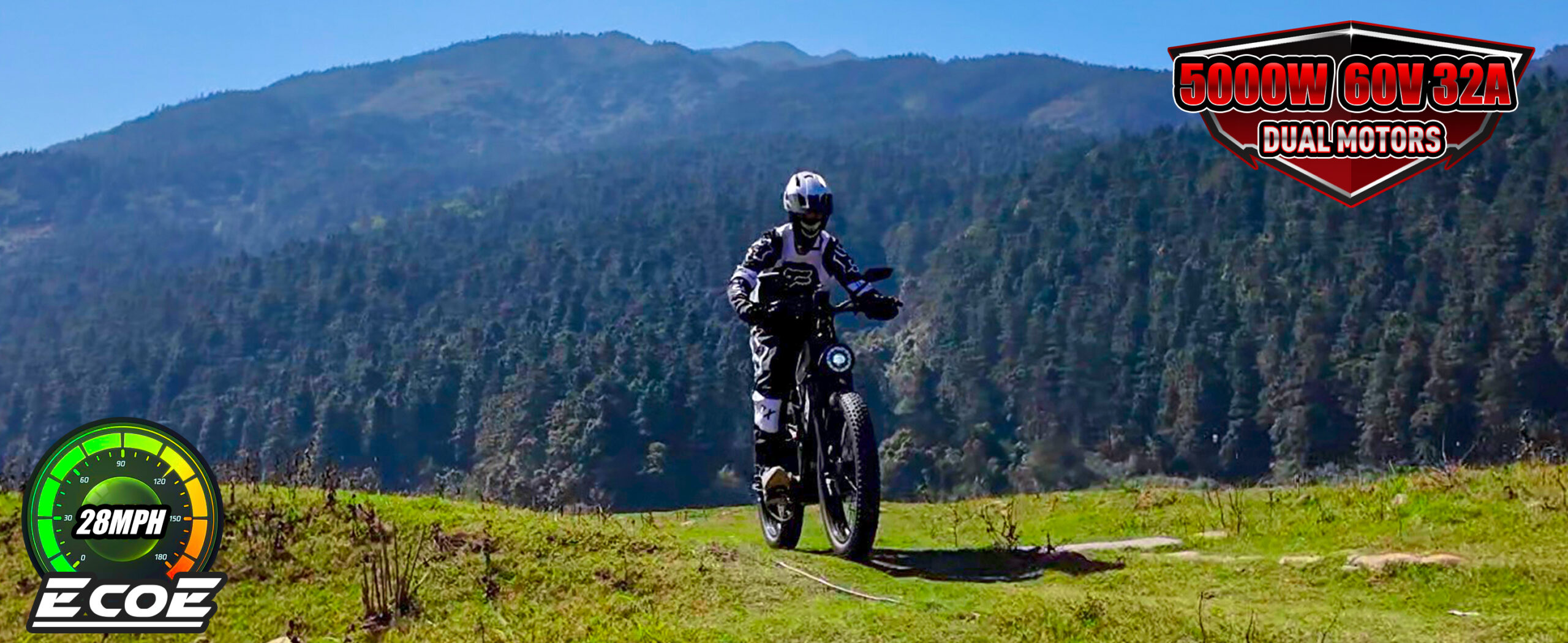
The development history of electric bicycle braking components
The EcoE 5000W electric bike Powerful Motor: EcoE is equipped with a 60V 5000W high-speed brushless motor. Due to different loads and road conditions, the electric bike drive system provides adjustable assistance, allowing you to stay healthy, relax, and exercise.Accessories: This electric bike accessory set includes a rearview mirror, water bottle holder and bottle, a sturdy phone mount, and a waterproof phone pouch. The reinforced cargo rack allows you to easily carry extra items needed for your ride. Additionally, if you need more accessories, you can purchase a detachable storage rack, passenger safety seat, trailer, and more.60V 32AH Battery: The bike is equipped with a high-capacity, removable 32AH battery, providing longer range per charge and over 1000 charge cycles. With pedal assist, the fat tire e-bike can travel 35-80 miles, depending on riding mode, load, and terrain. You can also purchase a spare battery for extended trips.Comfort and Versatility: This fat tire electric bike comes with dual front suspension and rear shocks to reduce impact and strain during rides. Its 26-inch wheels, 4-inch tires, and SHIM 7-speed system offer excellent grip across diverse terrains. Front and rear disc brakes ensure safe, responsive stopping, whether on mountain trails or city streets. – The following is a summary table: Stage Time Characteristics of braking components Early stage From the birth of electric bicycles to the end of the 20th century Mainly mechanical brakes such as caliper brakes (V – brakes) and cantilever brakes are used. They have a simple structure, low cost and convenient maintenance, but the braking effect is limited. Development stage From the early 21st century to the mid – 2010s Disc brakes have gradually become popular, which have the advantages of good braking effect and stable performance. High – end models begin to be equipped with electronic braking systems, which can achieve precise […]
Read more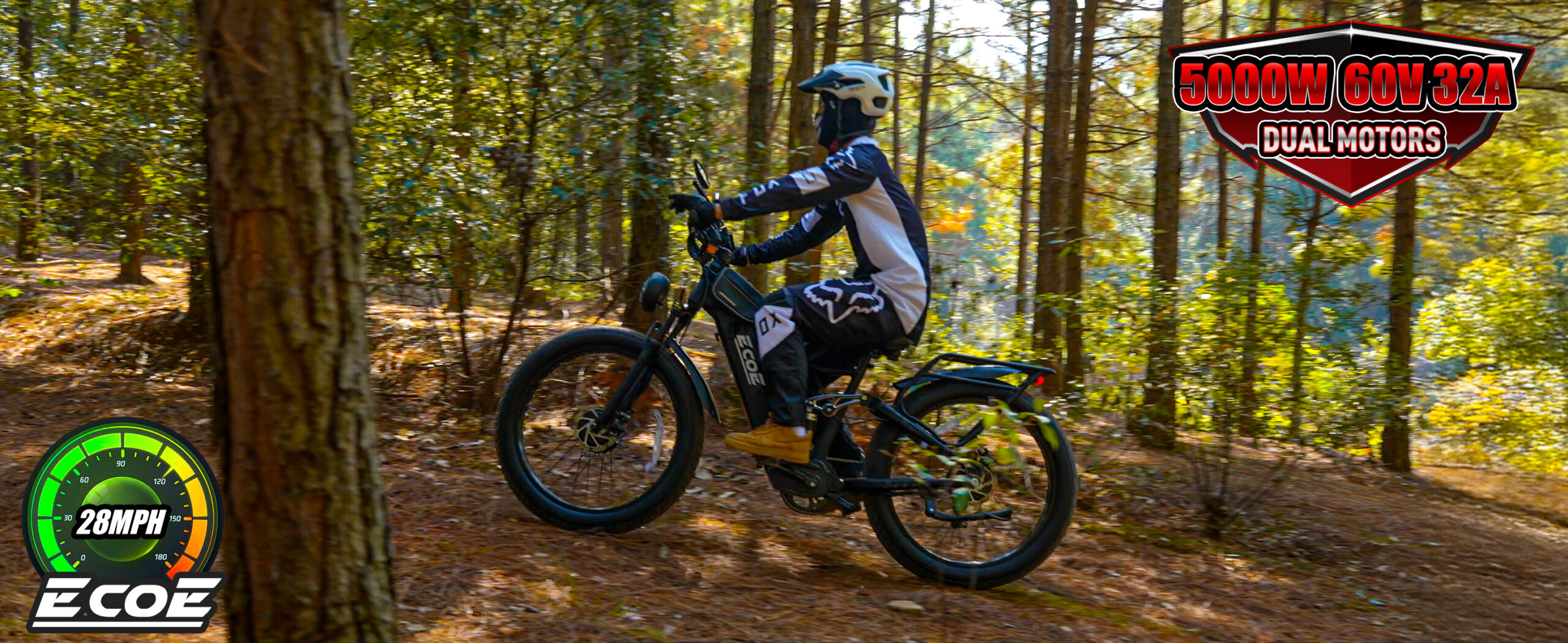
The development history of electric bicycle hubs from 2019 to the present
The EcoE 5000W electric bike Powerful Motor: EcoE is equipped with a 60V 5000W high-speed brushless motor. Due to different loads and road conditions, the electric bike drive system provides adjustable assistance, allowing you to stay healthy, relax, and exercise.Accessories: This electric bike accessory set includes a rearview mirror, water bottle holder and bottle, a sturdy phone mount, and a waterproof phone pouch. The reinforced cargo rack allows you to easily carry extra items needed for your ride. Additionally, if you need more accessories, you can purchase a detachable storage rack, passenger safety seat, trailer, and more.60V 32AH Battery: The bike is equipped with a high-capacity, removable 32AH battery, providing longer range per charge and over 1000 charge cycles. With pedal assist, the fat tire e-bike can travel 35-80 miles, depending on riding mode, load, and terrain. You can also purchase a spare battery for extended trips.Comfort and Versatility: This fat tire electric bike comes with dual front suspension and rear shocks to reduce impact and strain during rides. Its 26-inch wheels, 4-inch tires, and SHIM 7-speed system offer excellent grip across diverse terrains. Front and rear disc brakes ensure safe, responsive stopping, whether on mountain trails or city streets. – The following is a summary table: Time Development Characteristics 2019 The “New National Standard” was implemented. The design and production of hubs focused on meeting the standards, developing in the direction of lightweight and comfort, and the appearance design was diversified. 2020 – 2022 – In terms of materials, aluminum – alloy hubs were dominant, and the market share of high – end products such as carbon – fiber and magnesium – alloy hubs expanded. Light – weight, high – strength materials became the mainstream.– In terms of technology, the hub – motor technology was innovated, such as the breakthrough of Yadea’s permanent […]
Read more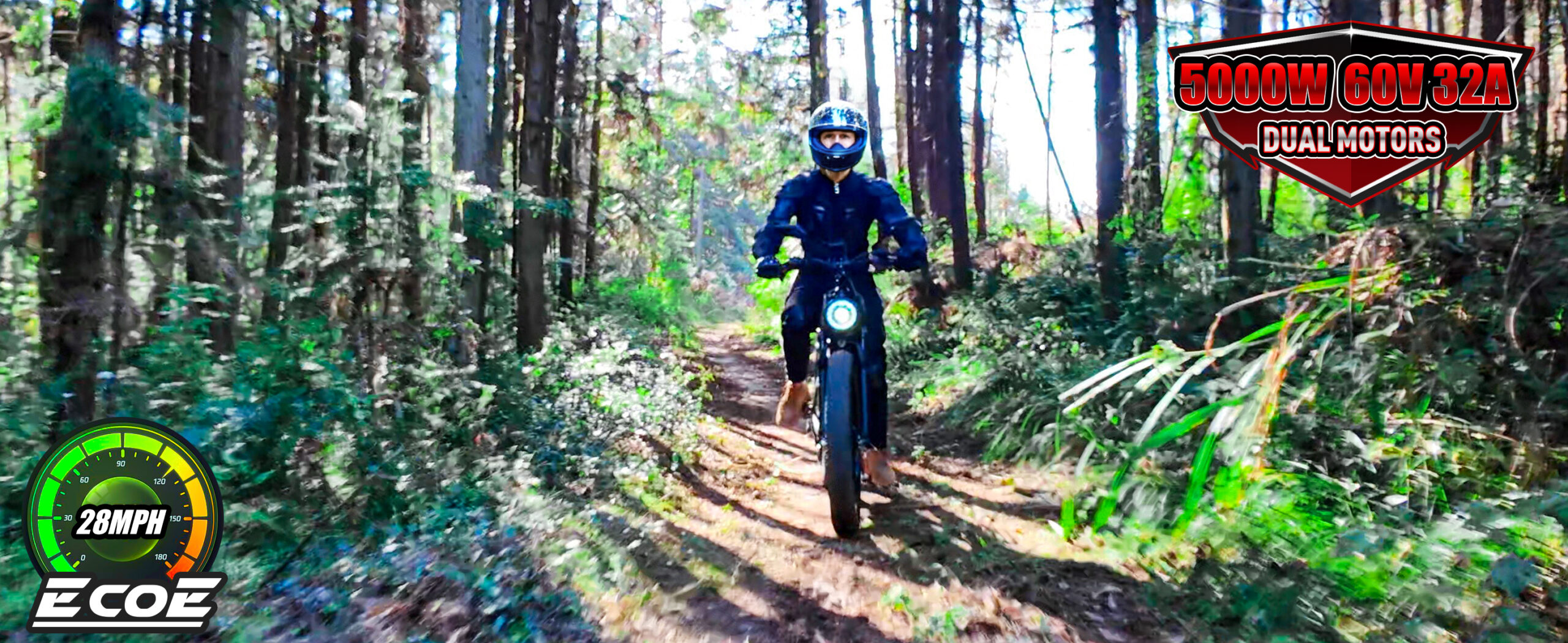
Adult Electric Dirt Bikes with Regenerative Braking: Energy Efficiency Explained
Regenerative braking isn’t just for electric cars anymore—it’s changing how adult electric dirt bikes ride, save energy, and extend range. In this article, we break down what regenerative braking is, how it works in off-road bikes, and which 2025 models use it best. What Is Regenerative Braking? In short, regenerative braking turns your bike’s kinetic energy into battery power every time you slow down. Instead of wasting energy as heat (like traditional brakes), the system captures some of that force and pushes it back into your battery. It won’t fully recharge your bike—but it can give you extra range over time, especially on downhill or stop-and-go rides. Why It Matters for Electric Dirt Bikes For adult riders hitting trails, hills, and rugged terrain, regen braking offers three key benefits: As one Reddit user put it: Top Electric Dirt Bikes with Regenerative Braking (2025) 1. Zero FXE Feels like the bike is working with you, not against you. 2. Sur-Ron Light Bee X (2025 Edition) One YouTube rider noted: “On downhill rides, I barely touch my brakes. Regen does the work.” 3. Ecoe 5000W Dual Motor Electric Bike A California rider shared: “I love how I can coast downhill and actually feel like I’m saving power. It’s more than just a cool feature—it’s practical.” 4. Cake Kalk OR Is Regenerative Braking a Game Changer? Yes and no. While it won’t double your range, regen braking can add up over time, especially on mixed-terrain or hilly trails. Combined with smart throttle control and good battery habits, it becomes part of a smarter, more efficient ride. As adult riders look for performance, range, and sustainability, regenerative braking is quickly becoming a must-have feature. Whether you’re riding the urban trails with a Zero FXE, exploring mountains on a Sur-Ron, or seeking all-terrain thrills with […]
Read more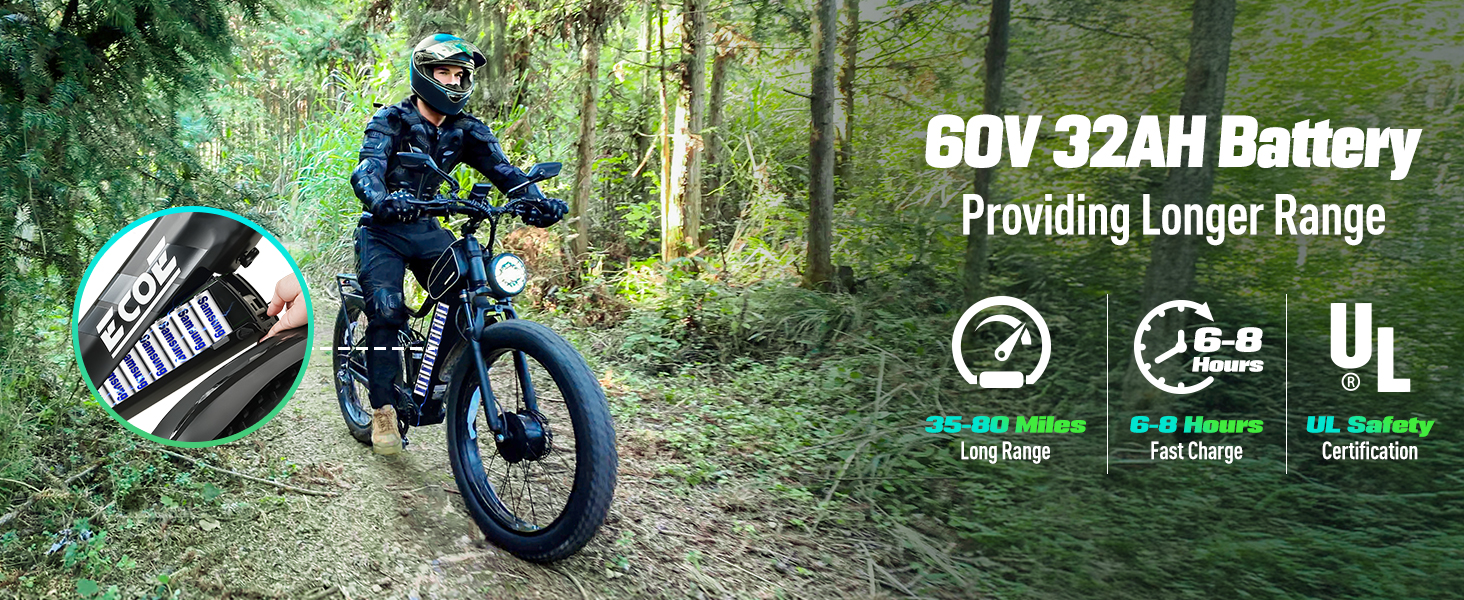
Best Quiet Electric Dirt Bikes for Adults: Low-Noise Off-Road Adventures
Looking for off-road thrills without the noise? In 2025, quiet electric dirt bikes are changing the game—giving adults a way to ride hard without disturbing the neighborhood or nature. Here are the best low-noise models that offer power, performance, and stealth. 1. Zero FXE One rider from Oregon said: “I can hit the trails at 6 a.m. and not wake a soul. Feels like I’m flying through the forest.” 2. KTM Freeride E-XC Great for riders who live in noise-restricted areas but still want a pro-level ride. 3. Ecoe 5000W Dual Motor Electric Bike A reviewer wrote: “I wanted something powerful but respectful of my surroundings. Ecoe nailed it.” 4. Sur-Ron Light Bee X Perfect for beginner and intermediate riders who want something quiet but still punchy. 5. Cake Kalk OR Why Ride a Quiet Electric Dirt Bike? Here’s why more adults are going stealth: Whether you’re riding for adrenaline or mindfulness, a low-noise bike brings a new kind of freedom. Noise doesn’t have to be part of the adventure. In 2025, quiet electric dirt bikes give adults everything they want—speed, control, and endurance—without the roaring engines. Whether you’re leaning toward the high-end Zero FXE or the value-packed Ecoe 5000W Dual Motor, one thing’s for sure: silence is the new power.
Read more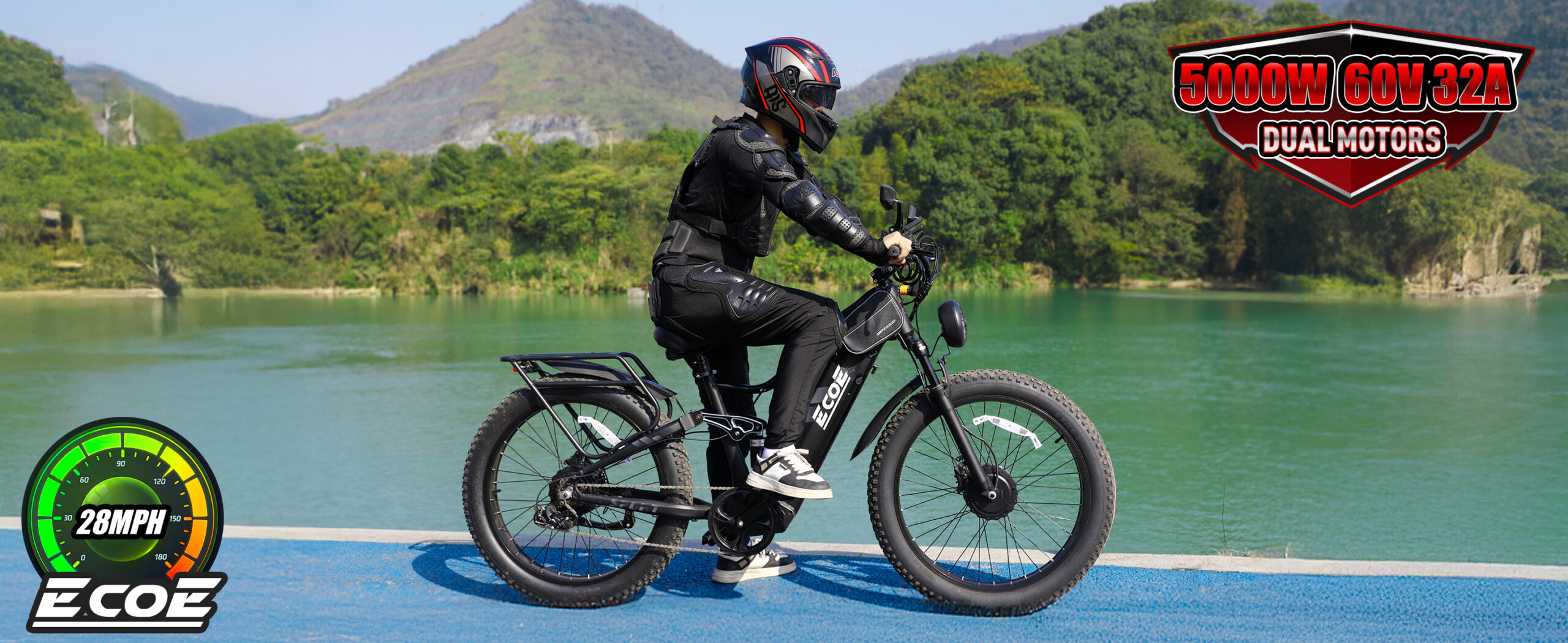
The development history of electric bicycle hubs from the early 21st century to 2019
The EcoE 5000W electric bike Powerful Motor: EcoE is equipped with a 60V 5000W high-speed brushless motor. Due to different loads and road conditions, the electric bike drive system provides adjustable assistance, allowing you to stay healthy, relax, and exercise.Accessories: This electric bike accessory set includes a rearview mirror, water bottle holder and bottle, a sturdy phone mount, and a waterproof phone pouch. The reinforced cargo rack allows you to easily carry extra items needed for your ride. Additionally, if you need more accessories, you can purchase a detachable storage rack, passenger safety seat, trailer, and more.60V 32AH Battery: The bike is equipped with a high-capacity, removable 32AH battery, providing longer range per charge and over 1000 charge cycles. With pedal assist, the fat tire e-bike can travel 35-80 miles, depending on riding mode, load, and terrain. You can also purchase a spare battery for extended trips.Comfort and Versatility: This fat tire electric bike comes with dual front suspension and rear shocks to reduce impact and strain during rides. Its 26-inch wheels, 4-inch tires, and SHIM 7-speed system offer excellent grip across diverse terrains. Front and rear disc brakes ensure safe, responsive stopping, whether on mountain trails or city streets. – The following is a summary table: Time Development Characteristics Early 21st century – Electric bicycles became substitutes for bicycles and motorcycles.– The research and development of brushless DC hub – motors made progress, and the brushless DC low – speed hub – motor became the mainstream in 2004. 2004 – 2014 – The electric bicycle industry developed rapidly, and the hub – motor developed from a brushed and geared motor to a brushless motor.– The material and structure of the hub were improved, developing from a spoke – type to an integrated aluminum – alloy or magnesium – alloy structure. 2014 – 2019 […]
Read more